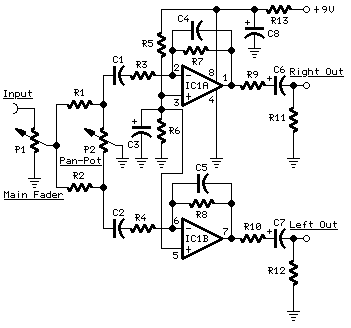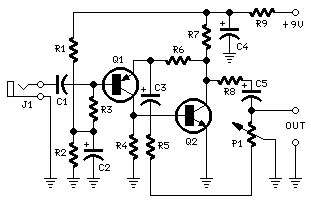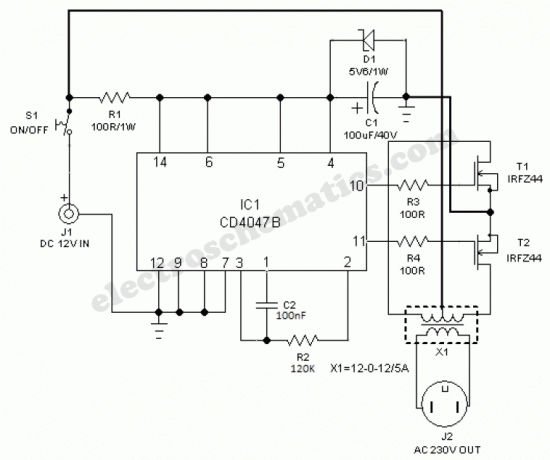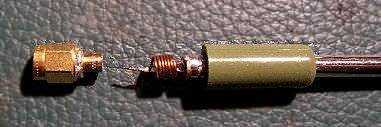
Portable Jacobs Ladder
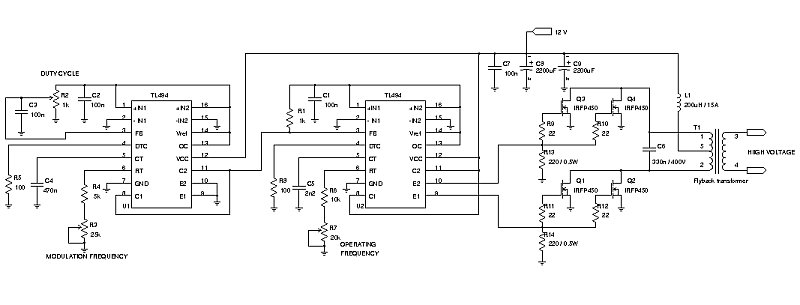
Portable Jacob's Ladder circuit designed specifically for experimental purposes.
The Portable Jacob's Ladder circuit is an intriguing project that demonstrates the principles of high-voltage arc generation. This circuit is typically utilized in educational settings or experimental demonstrations, showcasing the behavior of electrical arcs and plasma. The device operates by creating a continuous arc of electricity between two electrodes, which are positioned at an angle to each other, allowing the arc to climb upwards due to the heating of the air.
The main components of this circuit include a high-voltage power supply, two metal rods that serve as electrodes, and a switch to control the circuit operation. The power supply is essential as it must provide sufficient voltage to initiate and sustain the arc. Commonly, a transformer or a specialized high-voltage generator is employed to achieve the necessary voltage levels, often exceeding several thousand volts.
The electrodes are typically made from conductive materials such as steel or copper and are arranged in a V-shape. The spacing between the rods is critical; if they are too far apart, the arc will not form, and if they are too close, it may short-circuit. The angle and distance can be adjusted to control the arc length and behavior, allowing for various visual effects.
Safety precautions are paramount when working with high-voltage circuits. Proper insulation, grounding, and protective equipment should be employed to prevent accidental shocks or injuries. Additionally, the circuit should be operated in a controlled environment, free from flammable materials, to mitigate the risk of fire hazards associated with electric arcs.
The Portable Jacob's Ladder circuit serves not only as an engaging project for enthusiasts but also as a practical demonstration of electrical principles, including ionization, voltage breakdown, and the behavior of gases under high-energy conditions.For mad scientists only ! Portable Jacobs Ladder circuit. A very unique project. 🔗 External reference
The Portable Jacob's Ladder circuit is an intriguing project that demonstrates the principles of high-voltage arc generation. This circuit is typically utilized in educational settings or experimental demonstrations, showcasing the behavior of electrical arcs and plasma. The device operates by creating a continuous arc of electricity between two electrodes, which are positioned at an angle to each other, allowing the arc to climb upwards due to the heating of the air.
The main components of this circuit include a high-voltage power supply, two metal rods that serve as electrodes, and a switch to control the circuit operation. The power supply is essential as it must provide sufficient voltage to initiate and sustain the arc. Commonly, a transformer or a specialized high-voltage generator is employed to achieve the necessary voltage levels, often exceeding several thousand volts.
The electrodes are typically made from conductive materials such as steel or copper and are arranged in a V-shape. The spacing between the rods is critical; if they are too far apart, the arc will not form, and if they are too close, it may short-circuit. The angle and distance can be adjusted to control the arc length and behavior, allowing for various visual effects.
Safety precautions are paramount when working with high-voltage circuits. Proper insulation, grounding, and protective equipment should be employed to prevent accidental shocks or injuries. Additionally, the circuit should be operated in a controlled environment, free from flammable materials, to mitigate the risk of fire hazards associated with electric arcs.
The Portable Jacob's Ladder circuit serves not only as an engaging project for enthusiasts but also as a practical demonstration of electrical principles, including ionization, voltage breakdown, and the behavior of gases under high-energy conditions.For mad scientists only ! Portable Jacobs Ladder circuit. A very unique project. 🔗 External reference
